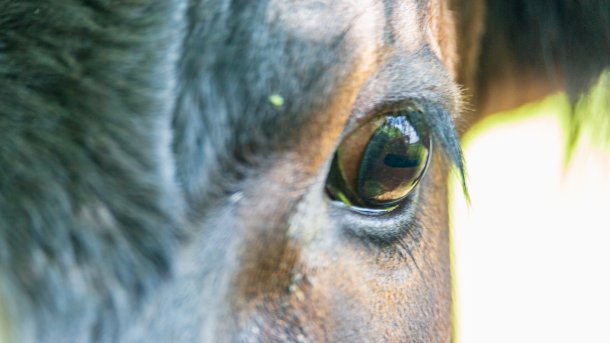Less methane in beef production
Low-methane beef is now available in Sweden. Seaweed from bioreactors makes it happen.

(Bild: Aidask / shutterstock.com)
(Hier finden Sie die deutsche Version des Beitrags)
According to the Thünen Institute, almost eight per cent of Germany's greenhouse gases come from agriculture, and a large part of that in turn comes from the rumen of cows, primarily in the form of methane. Several years ago, researchers discovered that seaweed as a feed additive can significantly reduce methane emissions. Now the first low-methane beef produced with seaweed is coming onto the market in Sweden. Commercial production of the feed additive is also starting in other places.
Chemical reaction in the rumen
In the rumen, hydrogen and carbon dioxide are produced during digestion. From this, an enzyme forms methane, a far more potent greenhouse gas than CO₂. A single cow produces up to 500 litres of methane a day, 90 percent of which is released into the atmosphere. Vitamin B12 is involved in this process. Red seaweed (Asparagopsis taxiformis) contains bromoform (CHBr3), which blocks the use of the vitamin and largely stops methane production as a result. A positive side effect: the animal is left with more resources for milk production.
The Swedish start-up Volta Greentech has now begun to grow seaweed commercially. They do not grow it in the sea, but on land in large, transparent cylinders. Normal seawater serves as the nutrient medium, and the bioreactors are lit with green electricity, according to the company. The heat and the CO₂ (as feed for the seagrass) come from a neighbouring factory. Red seaweed grows on all coasts of the world, but in a controlled environment, higher yields and better quality can be achieved, the company says.
LOME: Into the food
The seaweed is added to the normal animal feed in dried form. Under the brand name LOME ("Low on Methane"), the Coop retail chain is now bringing minced meat, sirloin steaks and fillets from seaweed-fed cattle to market. "This is the first time that low-methane beef is going to consumers," Fredrik Åkerman, CEO of Volta Greentech, told the US magazine Fortune.
The start-up had previously tested the effectiveness of the feed additive on a Swedish farm. 17 young bulls - Hereford, Angus and Charolais crossbreeds - were given around 60 grams of seaweed mixed into their feed every day for 13 days, about 0.6 per cent of the dry mass of the feed. This was done automatically via a machine called GreenFeed, which attracted the bulls with feed pellets and made them stick their heads into a kind of suction bell for as long as possible. In this way, their respiratory gases could be analysed. The result was an average 81 per cent reduction in methane emissions.
What would be even more effective
In 2023, Volta Greentech wants to build another seaweed factory. "With this, we want to become one of the world's largest seagrass producers. Global demand far exceeds supply," the Swedes write on their website. Other start-ups like Blue Ocean Barns in Hawaii or CH4 Global in Australia also want to produce seaweed on a large scale.
Another substance that suppresses the formation of methane is 3-nitrooxypropanol (3-NOP). According to the agricultural newspaper, it is also to be approved as a feed additive in the EU. However, it only reduces methane emissions by 20 to 35 percent. If these approaches gain acceptance, they could be an important building block for more climate-friendly agriculture. Of course, it would be even more effective to eat less meat in general.
(pavb)